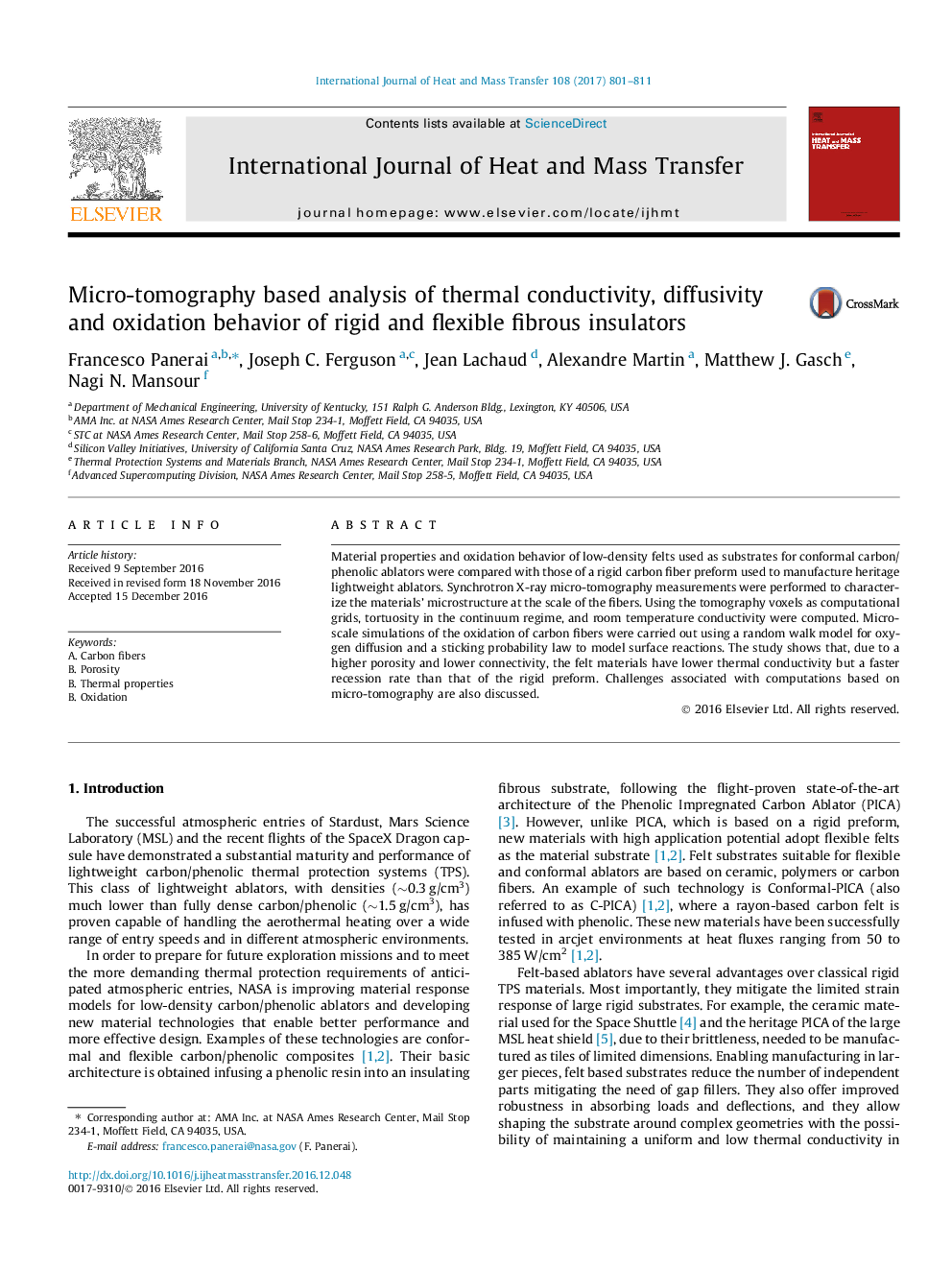| Article ID | Journal | Published Year | Pages | File Type |
|---|---|---|---|---|
| 4994320 | International Journal of Heat and Mass Transfer | 2017 | 11 Pages |
Abstract
Material properties and oxidation behavior of low-density felts used as substrates for conformal carbon/phenolic ablators were compared with those of a rigid carbon fiber preform used to manufacture heritage lightweight ablators. Synchrotron X-ray micro-tomography measurements were performed to characterize the materials' microstructure at the scale of the fibers. Using the tomography voxels as computational grids, tortuosity in the continuum regime, and room temperature conductivity were computed. Micro-scale simulations of the oxidation of carbon fibers were carried out using a random walk model for oxygen diffusion and a sticking probability law to model surface reactions. The study shows that, due to a higher porosity and lower connectivity, the felt materials have lower thermal conductivity but a faster recession rate than that of the rigid preform. Challenges associated with computations based on micro-tomography are also discussed.
Related Topics
Physical Sciences and Engineering
Chemical Engineering
Fluid Flow and Transfer Processes
Authors
Francesco Panerai, Joseph C. Ferguson, Jean Lachaud, Alexandre Martin, Matthew J. Gasch, Nagi N. Mansour,
